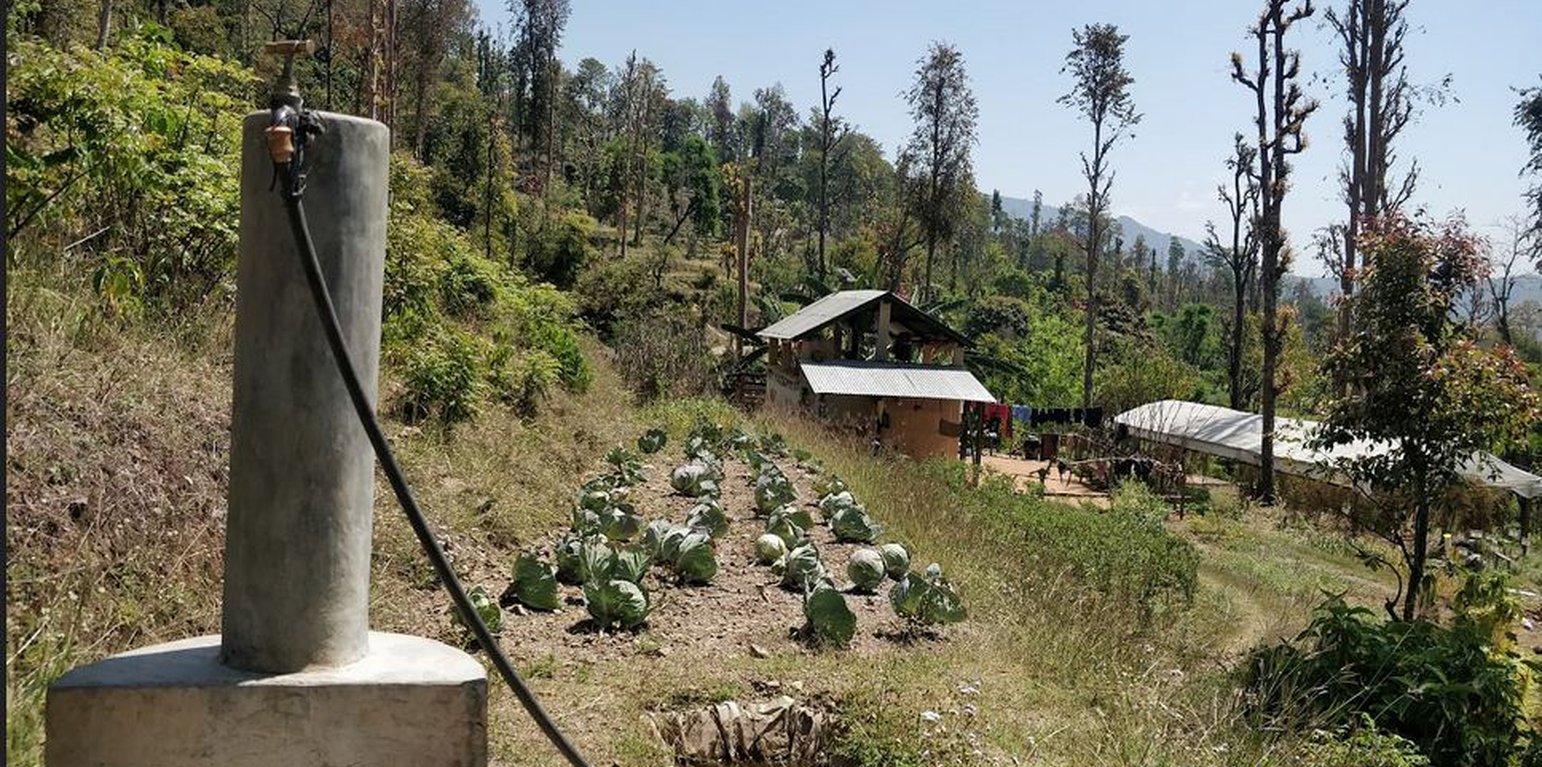



The technology is applied in a natural environment. The place of study falls under the dry belt of Nepal, receiving less than average annual rainfall (in context of Nepal). The source of water is natural that is located within a community forest area (samudayik ban), which is owned by the government and consists of trees like Sal, Supari (areca nuts), etc. From there, water collects onto a Ghaito / ferro-cement tank, which falls on the land owned by Mr. Krishna Bahadur B.K., who voluntarily agreed to donate the land for its construction. The total area covered for the tank is 1 ropani (1 hectare = 19.65 ropanis). From the reservoir, water is collected in a ferrocement tank / Ghaito / Thulo tanki (for drinking water) and a reservoir pond (for irrigation). Poly Vinyl Chloride (PVC) pipes are fed onto the tanks to distribute the water for multiple purposes in 6 Multiple Use Water System (MUWS) tap-towers; which consist of two faucets each - one for drinking and the other for irrigation and other purposes.
The major purposes of this technology are to supply clean water for drinking and other purposes to the community that is comprised of 23 households, through a cheap, effective and simple system. For establishing the system, labour and construction materials were needed for building Ghaito and pipeline systems. For the maintenance, manual labour is necessary. The natural source of water is locally maintained. The quality of the water that is supplied to the 23 households is good and the quantity seems sufficient for the number of households. Operation and maintenance works are done by the locals who collect NPR. 50 from each household. The system is guarded by a watchman (Chaukidar) who is given a monthly stipend of NPR. 800 from the committee. The system was financed through a public-private-partnership (PPP) program; out of which some amount was funded by a Non-Governmental Organization (NGO) - Sundar Nepal, primary survey of the natural source of water was done by another NGO- Anukulan Project with the help from UK-AID (NPR. 1,46,000) , and the remaining funds were contributed by the locals’ group (NPR. 1,39,183), by collecting NPR. 3000 initially then NPR. 1200 from each household. The then Village Development Committee (VDC) donated NPR. 1,00,000 and labour costs borne by the locals amounted to NPR. 85,600. Total amount invested for the project amounted to NPR. 4,70,783. Benefits of the technology are the sustainable use of water resources through a MUWS system, cheap and effective way to conserve water resources and the ensured availability of clean water even through dry seasons. The villagers like the facts that the water is clean, more water is available for irrigation for vegetable farming, and that their day-to-day life is simplified. They dislike the limited availability of water during dry season and that out of 6 systems only 3 are in operation and the other ones are in a non-working condition.
A separate committee is set up for the smooth operation of the system, which consists of 20 members- 10 males and 10 females. The head of the committee is Mrs. Amrita B.K.. The committee conducts a monthly meeting on 10th of each Nepalese month to discuss the problems and need of maintenance. During the initial setup, the connection of pipelines from the tap systems to the reservoir tanks was, however, done with the contribution of the locals. Every month, each family contributes NPR 50, which goes to a fund that is set up for the times of need. The labor contribution by the people of the VDC was dependent upon the number and availability of family members in the household. Similarly, the use of MUWS system and water from it is also dependent upon the availability of family members. Little to no maintenance was done to the system till now from 2073 B.S. ( 3 years) . Equal number of male and female members are in the committee dedicated to the MUWS system.
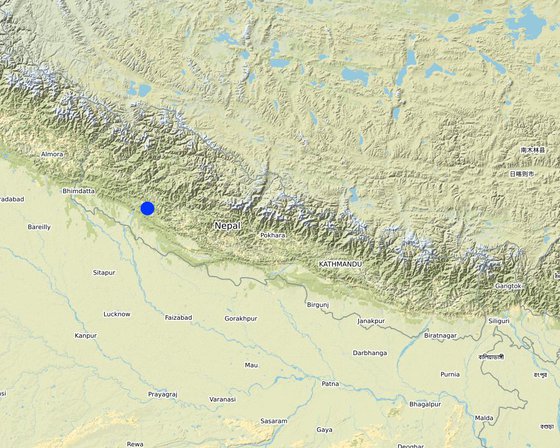
Lieu: Kunathari VDC-5, Saajh Pani, Barahataal, Badichaur, Province-6, Mid-Western Development Region, Népal
Nbr de sites de la Technologie analysés: site unique
Diffusion de la Technologie: appliquée en des points spécifiques ou concentrée sur une petite surface
Dans des zones protégées en permanence ?: Non
Date de mise en oeuvre: 2015
Type d'introduction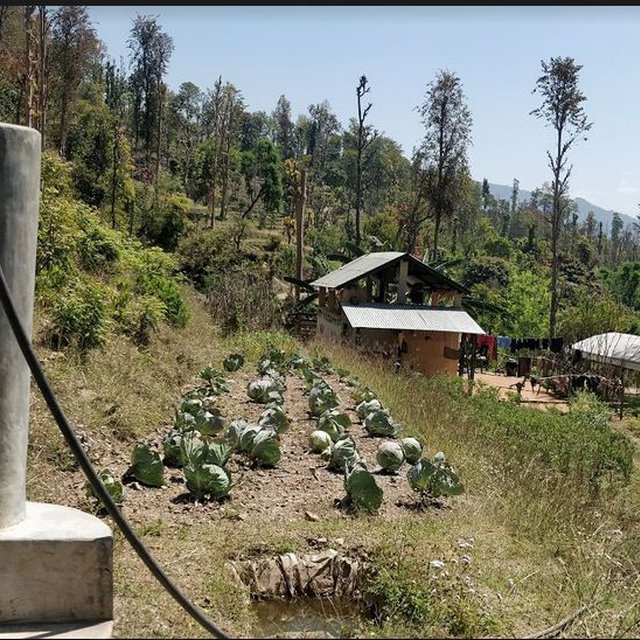
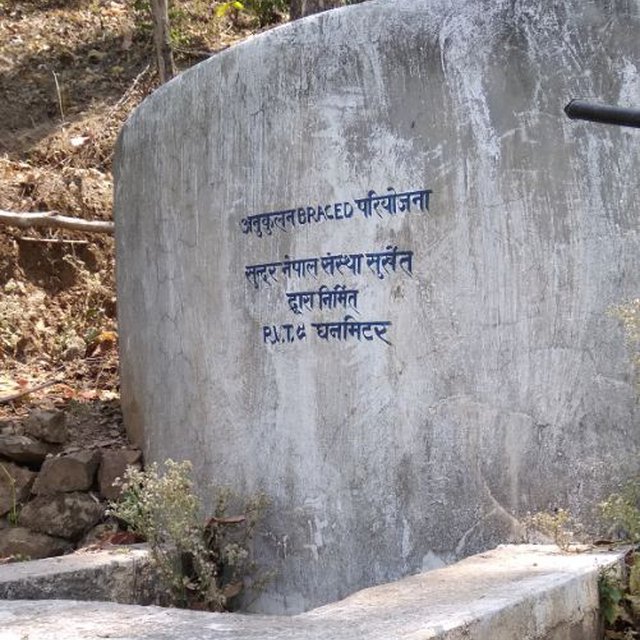




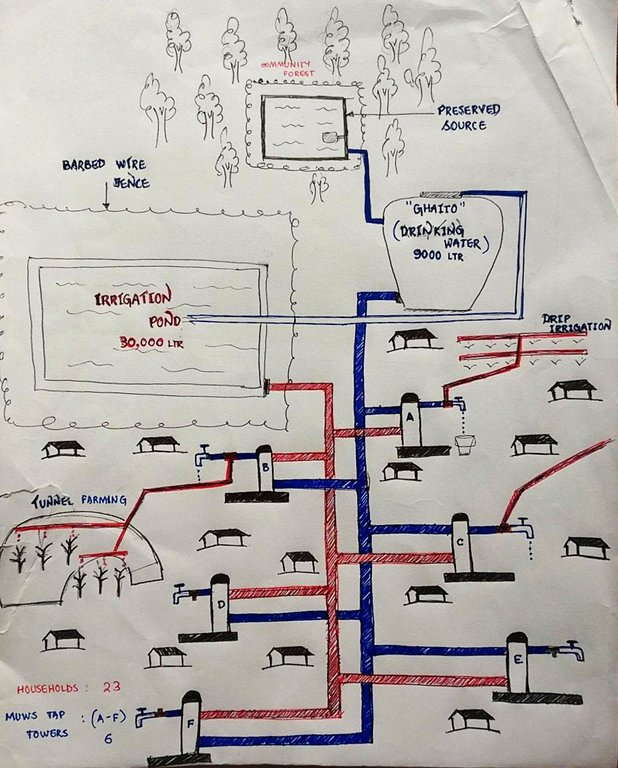
| Spécifiez les intrants | Unité | Quantité | Coûts par unité (NPR) | Coût total par intrant (NPR) | % des coût supporté par les exploitants des terres |
| Main d'œuvre | |||||
| Labour Costs by Locals | N/A | 1,0 | 85600,0 | 85600,0 | 100,0 |
| Primary Survey and Securing of Source | 1 | 1,0 | 146000,0 | 146000,0 | |
| Equipements | |||||
| Construction of Tank, Pond and MUWS Tap Towers | 1 | 1,0 | 100000,0 | 100000,0 | |
| Laying down pipework, Other Construction | 1 | 1,0 | 139183,0 | 139183,0 | 100,0 |
| Coût total de mise en place de la Technologie | 470'783.0 | ||||
| Coût total de mise en place de la Technologie en dollars américains (USD) | 4'279.85 | ||||
| Spécifiez les intrants | Unité | Quantité | Coûts par unité (NPR) | Coût total par intrant (NPR) | % des coût supporté par les exploitants des terres |
| Main d'œuvre | |||||
| Voluntary Labour borne by the Locals | 1 | 1,0 | 100,0 | ||
| Equipements | |||||
| PVC Pipes | 1 metres | 400,0 | 30,0 | 12000,0 | 100,0 |
| Coût total d'entretien de la Technologie | 12'000.0 | ||||
| Coût total d'entretien de la Technologie en dollars américains (USD) | 109.09 | ||||
The access to health, education and markets along with other facilities is only accessible after a 15 minute journey to the ‘bazaar’ or market area from the village. After implementation of the project, people are able to grow vegetables in green houses, annually, and that has added to their source of income.
evaporation of water decreased after the construction of enclosures / tanks.